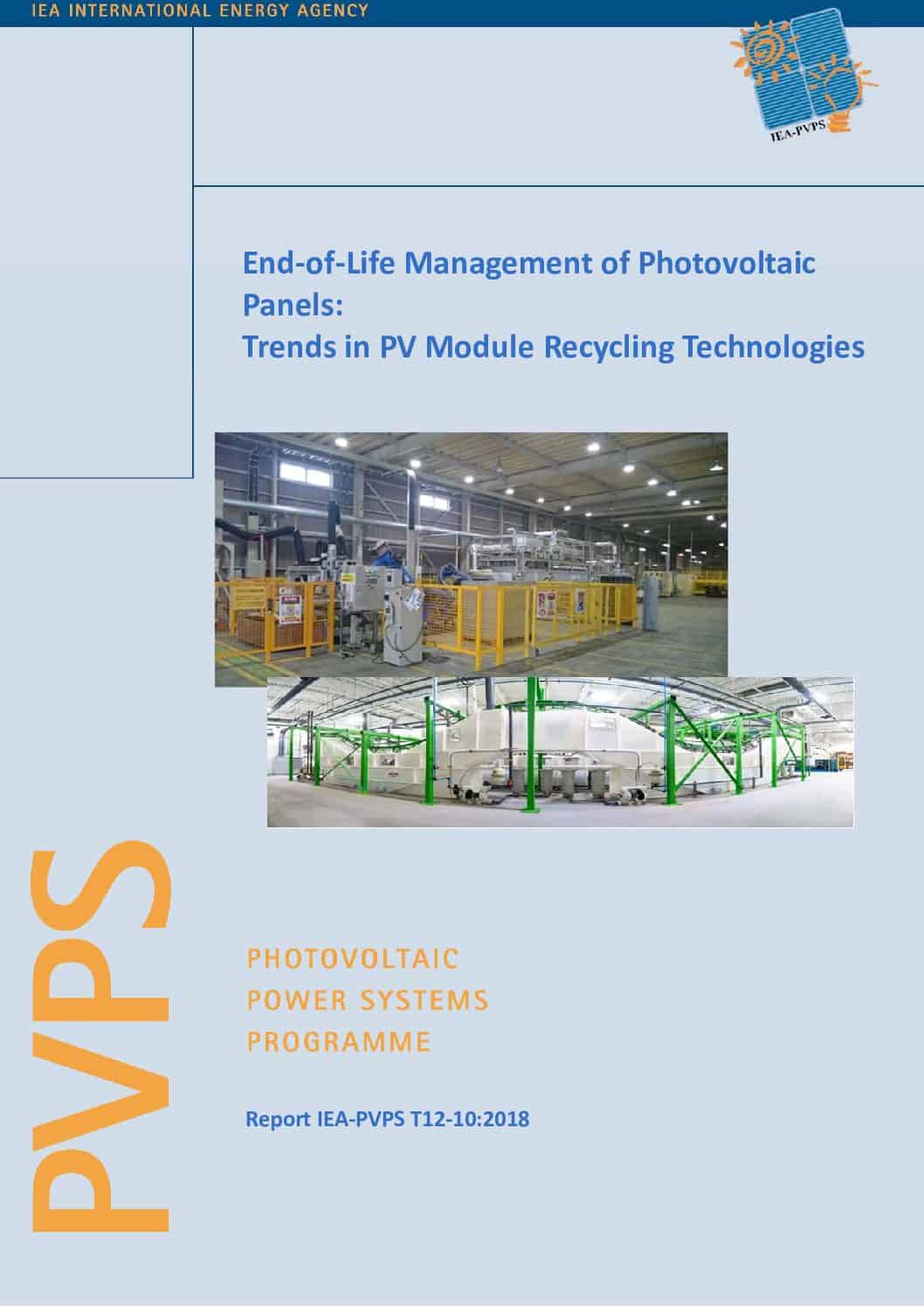Photovoltaic (PV) technology is one of the most promising technologies for improving energy security and mitigating climate change. The PV market is growing rapidly, and further market expansion is expected all over the world. In addition to its positive impacts on energy security and climate change, PV technology is also among the most environmentally friendly technologies of all energy and electricity generation technologies, particularly when evaluated from a life-cycle viewpoint, including end-of-life management. This means that proper end-of-life management is an indispensable issue for “clean” energy technologies.
All technologies eventually degrade to where they enter their end-of-life stage, eventually requiring replacement. PV modules have a useful lifespan of approximately 30 years. With PV deployment increasing exponentially, the number of PV modules that reach the end of useful life will also greatly increase after the time lag of operation, accumulating proportionately as waste. A report published by International Energy Agency Photovoltaic Power Systems Programme (IEA PVPS) Task12 and the International Renewable Energy Agency (IRENA) in 2016 projected waste PV modules globally to amount to 1,7–8,0 million tons cumulatively by 2030 and to 60-78 million tons cumulatively by 2050.
Generally, sustainable waste management offers opportunities known as the 3Rs: reduce, reuse, and recycle. When a product cannot be repaired or reused, recycling is the next preferable option before disposing as waste. In anticipation of the large volume of waste PV modules, and to retain PV’s position as a clean energy technology, PV module recycling has become an important emerging topic, and various discussions and activities have been conducted and developed by governments, organizations, and companies. (Discussions on the topic of PV module reuse are considered to be less mature.)
The EU Waste Electrical and Electronic Equipment (WEEE) Directive revised in 2012 (2012/19/EU) addresses the waste management of all electronics, including waste PV modules, in the EU member states. It requires 75%/65% (recovery/recycling rate) of waste PV modules by mass to be recycled through 2016, then increases to 80%/75% through 2018 and to 85%/80% thereafter. In addition to such a regulatory scheme, it is obvious that recycling technologies must be available to meet the increasing requirements of WEEE. Available recycling facilities that treat PV modules can meet current WEEE requirements; additional research and development (R&D) is required to meet subsequent WEEE requirements at reasonable cost.
This report aims to provide an international survey of trends related to the development of PV module recycling technology from the perspective of both the private and public sectors. For the private sector, we review patents, as patent filing has been increasing since 2011. For the public sector, we review R&D plans and investments made by many countries active in PV module recycling technology development. Because it takes a long time to develop and commercialize new technologies, we hope that this report will accelerate technology development through transparent sharing of status and insight pertaining to the development of PV module recycling technologies. Managing end-of-life PV modules to recover valuable materials that can displace virgin ones is an important step toward meeting the challenge of sustainabiliy.
